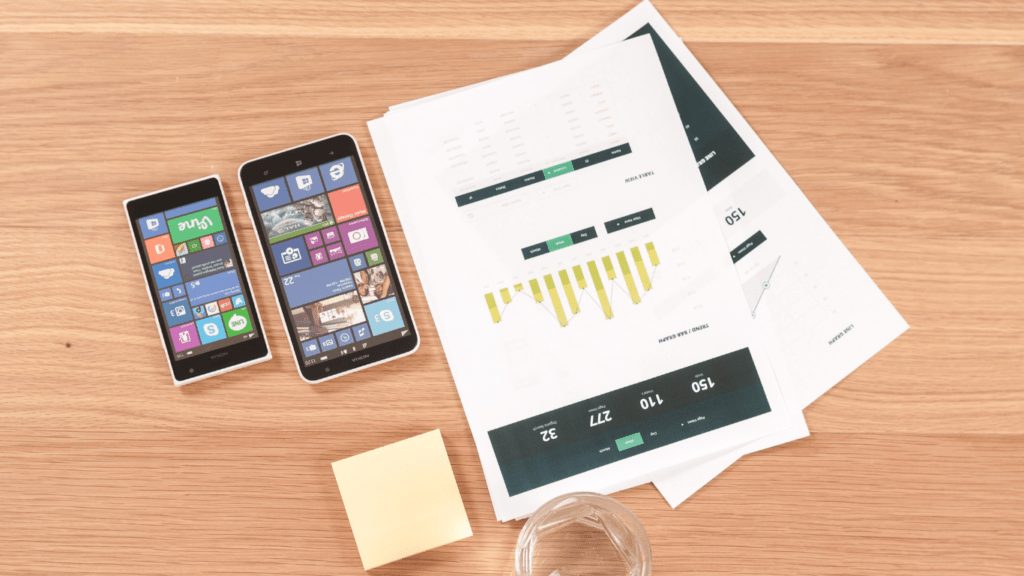Understanding the Power of Social Media
Social media platforms like Facebook, Instagram, and Twitter offer unparalleled access to millions of users. Businesses leverage these platforms to engage with customers, showcase products, and drive sales. According to Statista, Facebook had 2.89 billion monthly active users in Q2 2021.
Engagement with customers boosts brand visibility. Interactive content creates meaningful connections, leading to higher customer retention rates. For example, responding to user comments on Instagram can foster loyalty.
Targeted advertising on social media facilitates precise market reach. Facebook Ads Manager allows businesses to target specific demographics, ensuring marketing efforts reach the right audience. In 2020, social media ad spending in the U.S. reached $41.5 billion, highlighting its significance.
Data analytics provided by social platforms help businesses optimize strategies. Tools like Facebook Insights and Twitter Analytics offer valuable user behavior data. Understanding which content resonates most can refine marketing tactics.
User-generated content (UGC) enhances authenticity. Encouraging customers to share their experiences builds trust and credibility. For instance, shared reviews and testimonials on Twitter can influence purchasing decisions.
Leveraging influencers broadens reach. Partnering with social media influencers offers exposure to their followers. An influencer endorsement on Instagram can quickly boost product visibility.
Incorporating social media into sales strategies can transform business outcomes. Its ability to connect, engage, and convert is unmatched in today’s digital age.
Building a Strong Social Media Presence
A robust social media presence is crucial for driving sales online. In this section, I’ll outline key strategies to help you build and maintain a strong presence on social platforms.
Choosing the Right Platforms
Selecting the right social media platforms is essential. Each platform has its unique audience and strengths. For instance:
- Facebook: Best for targeting a wide range of demographics, especially users aged 25-44.
- Instagram: Ideal for visual content and engaging younger audiences, particularly those aged 18-34.
- Twitter: Effective for real-time engagement and reaching users interested in news and trends.
- LinkedIn: Suitable for B2B marketing, networking with professionals, and sharing industry insights.
- Pinterest: Great for visually appealing products and targeting users interested in DIY, fashion, and home decor.
Businesses should analyze their target audience to determine the most effective platforms. Tools like Facebook Audience Insights and Instagram’s analytics can provide valuable information about where your audience is most active.
Creating Engaging Content
Engaging content is essential for capturing audience attention. To create compelling content:
- Use Visuals: High-quality images and videos tend to perform better than text-only posts. For example, Instagram Stories and Reels allow businesses to showcase products dynamically.
- Tell Stories: Authentic stories resonate more with audiences. Share the journey behind your products, customer testimonials, or behind-the-scenes content.
- Post Consistently: Regular posting keeps your audience engaged. Tools like Hootsuite and Buffer can help schedule content in advance.
- Utilize Hashtags: Hashtags improve discoverability. For instance, use trending hashtags on Twitter or Instagram to reach a wider audience.
- Engage with Followers: Responding to comments and messages fosters community and trust. For example, running Q&A sessions or conducting polls can increase interaction.
By focusing on the right platforms and creating engaging content, you’ll build a strong social media presence that drives sales.
Leveraging Social Media Advertising
Social media advertising drives targeted traffic to specific products and services. With several ad types available, I use strategic methods to maximize impact.
Types of Social Media Ads

Different platforms offer varied ad formats to match campaign goals.
- Facebook Ads: Single image, video, carousel, slideshow, and collection formats engage diverse audiences.
- Instagram Ads: Stories, photo, video, carousel, and collection ads use visual appeal to captivate users.
- Twitter Ads: Promoted tweets, accounts, and trends boost visibility through quick, engaging content.
- LinkedIn Ads: Sponsored content, InMail, text ads, and dynamic ads target professionals and businesses.
- Pinterest Ads: Promoted pins, video pins, shopping ads, and carousel ads inspire visual discovery.
Tips for Effective Ad Campaigns
Careful planning optimizes the effectiveness of ad campaigns.
- Audience Targeting: Use demographic, geographic, behavioral, and interest data to reach ideal customers.
- Compelling Visuals: High-quality images and videos ensure ads stand out and attract attention.
- Clear Messaging: Short, impactful texts convey the value proposition quickly.
- Consistent Branding: Use consistent colors, fonts, and logos to enhance brand recognition.
- A/B Testing: Experiment with different ad versions to find the most effective options.
- Analyzing Metrics: Monitor key performance indicators (KPIs) like click-through rates (CTR), conversion rates, and return on ad spend (ROAS) for continuous improvement.
Strategic use of these tools and methods makes social media advertising a robust driver of sales.
Utilizing Influencer Marketing
Influencer marketing delivers impressive results, making it an essential strategy in driving social media sales. I’ll explore critical steps in leveraging influencers for maximum impact.
Finding the Right Influencers
Identifying suitable influencers ensures a targeted approach. I follow these steps:
- Audience Alignment: Select influencers whose followers match my target demographic.
- Engagement Rates: Check communication levels between the influencer and their followers.
- Content Relevance: Ensure the influencer’s content aligns with my brand values.
- Past Collaborations: Review previous partnerships for insights into performance.
Measuring Influence and Reach
Tracking the effectiveness of influencer campaigns hinges on precise metrics. Here’s how I do it:
- Engagement Metrics: Monitor likes, comments, and shares on sponsored posts.
- Conversion Rates: Use unique discount codes or trackable links to measure sales generated.
- Reach and Impressions: Assess how many users viewed the content.
- ROI Calculation: Compare campaign costs against revenue generated to evaluate profitability.
Using these strategies, I ensure that influencer marketing efforts contribute significantly to driving sales through social media.
Engaging with Your Audience
Engaging with your audience is pivotal in driving social media sales, as it fosters a connection that encourages customer loyalty and repeat purchases.
Responding to Comments
I always respond to comments promptly. When I engage with followers’ comments, it shows that I value their input, which enhances trust. Answers to questions or thank you notes for positive feedback often encourage more interactions. Addressing negative feedback openly and helpfully mitigates damage and can convert dissatisfied customers into loyal ones. For example, if a customer expresses dissatisfaction with a product on Instagram, responding with a solution can strengthen the brand’s reputation.
Hosting Live Events and Q&A Sessions
Live events increase real-time engagement. When I host live Q&A sessions, I provide direct answers to participants’ questions, increasing transparency and trust. These sessions offer opportunities to showcase product features or share behind-the-scenes content. For example, conducting a live product demo on Facebook can effectively highlight its benefits, driving interest and sales. Engagement metrics, such as the number of questions asked and live viewers, offer insights into audience interests and can guide future content.
Analyzing Social Media Metrics
Analyzing social media metrics helps in understanding the effectiveness of social media efforts. Metrics provide valuable insights into what’s working and what needs adjustment.
Key Metrics to Track
Key social media metrics help measure success and drive sales. Engagement Rate, for instance, indicates how well content resonates with the audience. A higher rate means better content interaction. Click-Through Rate (CTR) shows the percentage of users who clicked on a specific link or call-to-action. A higher CTR typically corresponds to effective ad copy and targeting. Conversion Rate tracks the number of website visitors from social media who complete a desired action, indicating campaign success. Reach measures the total number of unique users who saw content, helping gauge overall visibility. Impressions track the total number of times content is displayed, regardless of clicks, offering insight into content exposure.
Tools for Measuring Performance
Various tools assist in measuring social media performance effectively. Google Analytics integrates seamlessly, tracking social-driven traffic and conversions. Facebook Insights offers comprehensive page performance data, including engagement and reach. Twitter Analytics provides metrics on tweet performance, follower growth, and engagement rates. Hootsuite, a robust social media management tool, tracks multiple platform metrics, offering an all-in-one solution. Sprout Social, another powerful tool, provides detailed reports on engagement, audience demographics, and performance trends. Each tool helps optimize strategies and improve marketing efforts.



